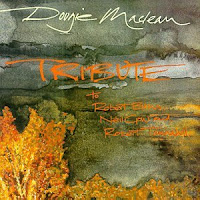Especially for Carl I made this update
about that picture.
Herb Ritts delighted in the portrayal of an
idealized--even exaggerated--human form. One of his best-known works,
"Fred with Tires" (1984) became possibly the archetypal photograph of
the male body in the 1980s and made the world-wide reputation of its commercial
photographer, Herb Ritts. Gay men flocked to buy it. Drawn by the powerful,
perfectly sculpted body, the butchness of his job, the dirty trousers, the
boots and the body placed within the social context. The image of this guy was
a constructed fantasy, not the 'real' thing. His hair is teased up and
beautifully styled, the grease is applied to his body just so, his body twisted
to just the right degree to accentuate the muscles of the stomach and around the
pelvis.
Ritts eschewed realism in making Fred
appealing in the midst of all the sludge and grunge — makeup turned into grease
and tires into something intrinsically mysterious. There were many
details/entendres: converging lines of the torso, diverging lines of arms and
tires, the oversized zipper, but the photo was not really posed.
Ritts remembers:
 “Each time I did assignments or editorials,
I realized that I wanted to do something more. I saw that it wasn’t just about
the clothes. Starting in 1984, I had an assignment for
“Each time I did assignments or editorials,
I realized that I wanted to do something more. I saw that it wasn’t just about
the clothes. Starting in 1984, I had an assignment for  Ritts became well known for dramatic
black-and-white photographs that focused on a single part of the subject's
body. His portrait of Olympic heptathlon champion Jackie Joyner-Kersee captures
her lower torso and powerful thighs in mid-leap; her head appears only in
shadow on the ground. Many of Ritts's photographs celebrate the well-developed
body. Some of his images have been compared to classical statuary because of
the exquisiteness of the subjects' form. Other photos, however, show human
vulnerability: Christopher Reeve posing in his wheelchair, Elizabeth Taylor
revealing her scar after brain surgery, the brilliant physicist Stephen Hawking
struggling against his frailty.
Ritts became well known for dramatic
black-and-white photographs that focused on a single part of the subject's
body. His portrait of Olympic heptathlon champion Jackie Joyner-Kersee captures
her lower torso and powerful thighs in mid-leap; her head appears only in
shadow on the ground. Many of Ritts's photographs celebrate the well-developed
body. Some of his images have been compared to classical statuary because of
the exquisiteness of the subjects' form. Other photos, however, show human
vulnerability: Christopher Reeve posing in his wheelchair, Elizabeth Taylor
revealing her scar after brain surgery, the brilliant physicist Stephen Hawking
struggling against his frailty.
Ritts died in
He is survived by his partner, Erik Hyman,
an entertainment attorney.
Herb Ritts and Michael Jackson















































